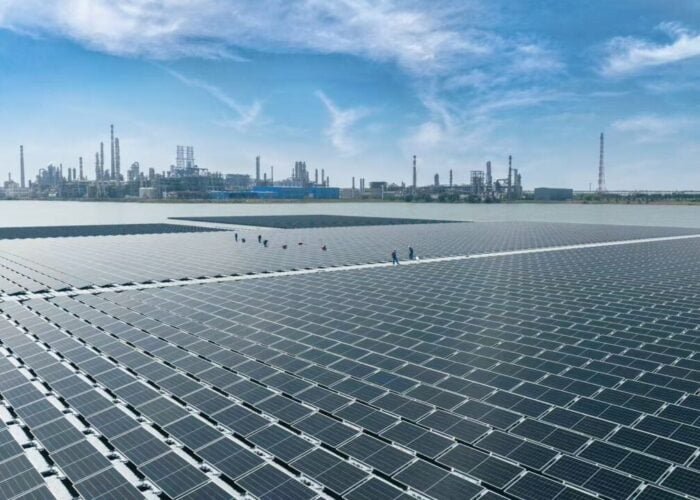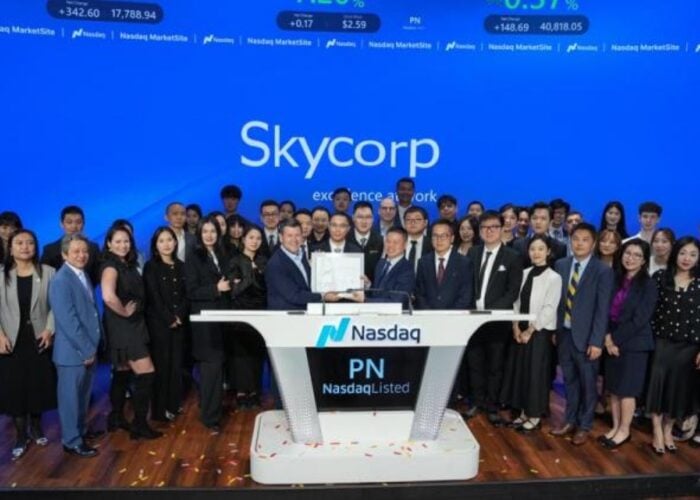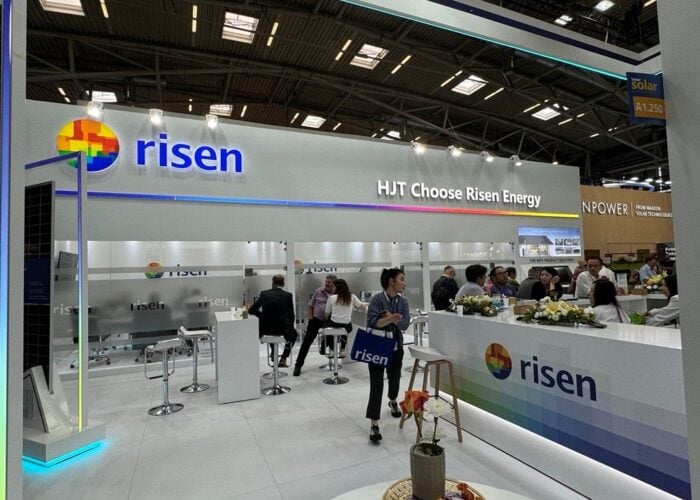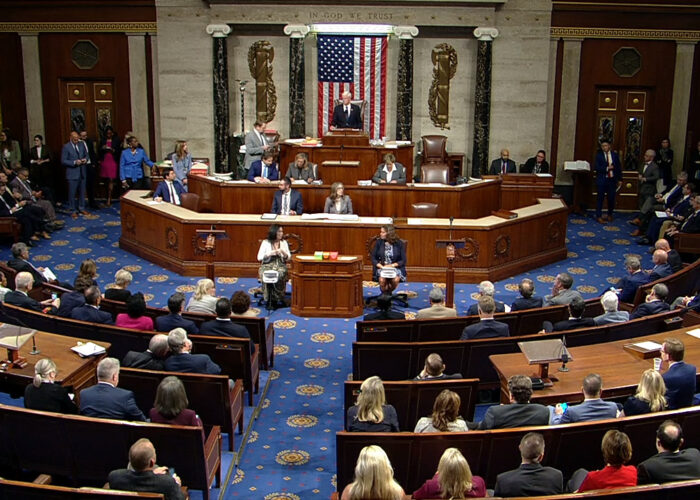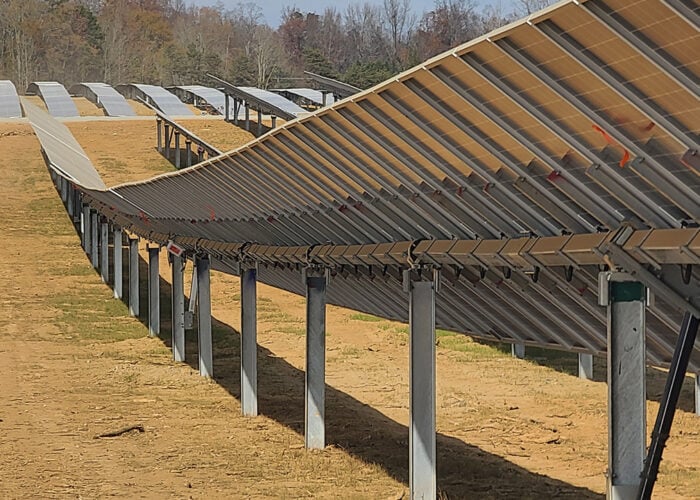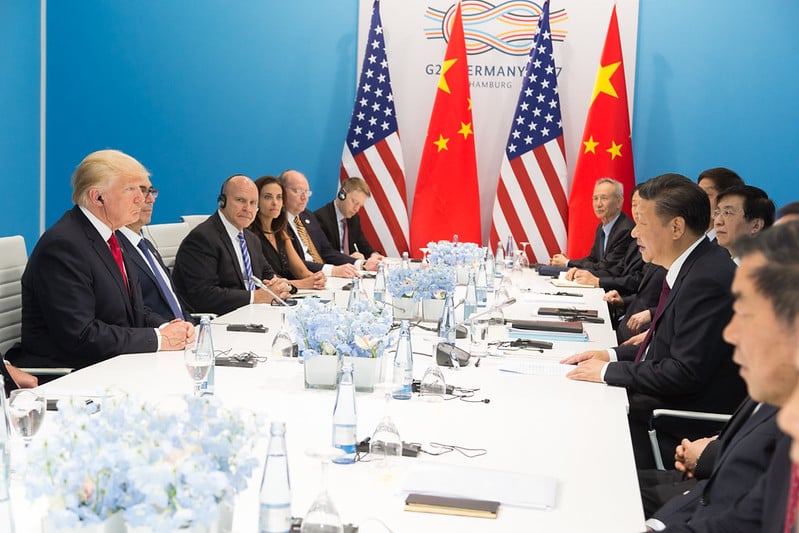
The easing of economic tensions between the US and China is set to throw a lifeline to the solar industry, bringing some respite to the sector after years of back-and-forth trade tariffs and levies.
US polysilicon makers will be allowed to export their products to China in greater volumes under the first phase of a trade agreement between the US administration of president Donald Trump and its Chinese counterpart, headed up by president Xi Jinping.
Unlock unlimited access for 12 whole months of distinctive global analysis
Photovoltaics International is now included.
- Regular insight and analysis of the industry’s biggest developments
- In-depth interviews with the industry’s leading figures
- Unlimited digital access to the PV Tech Power journal catalogue
- Unlimited digital access to the Photovoltaics International journal catalogue
- Access to more than 1,000 technical papers
- Discounts on Solar Media’s portfolio of events, in-person and virtual
The new deal agreed by both sides – a rapprochement after years of entrenched US-China trade conflict – sees China commit to taking at least US$200 billion more in US exports throughout 2020 and 2021, with 2017’s export figures set as the baseline.
Released this week, the agreement text states this US$200 billion in added US exports will span agriculture, energy, services but also manufactured goods. Within this last category, the document lists “solar-grade polysilicon” among the US products set to be sold to China in greater amounts.
Under a different manufactured goods sub-category – electrical equipment and machinery – the US and China also list “semiconductor devices; photosensitive semiconductor devices, including photovoltaic cells whether or not assembled in modules or made up into panels.”
The exact volumes of US solar goods that China will be accepting in 2020 and 2021 remain unclear but the agreement does specify that across all manufactured goods sub-categories, Beijing will be importing a least US$77.7 billion more over the two-year period.
The lifeline to US polysilicon makers was welcomed by the country’s solar industry – represented by association SEIA, which hailed this week’s deal as a “great development” – but also the manufacturers themselves, including REC Silicon, Hemlock Semiconductors and Wacker Polysilicon.
In a statement, the trio described themselves as the US’ “three remaining” polysilicon makers and thanked President Trump and US negotiators for securing the import concession from China. The hope, Hemlock CEO Mark Bassett said, is that the move will result in a “more level playing field”.
The US-China polysilicon trade spat dates back to the early 2010s, when Beijing moved to slap tariffs on imports from the market – as well as from the EU – even as it heaped subsidies on its own manufacturers.
Over the years, US makers have complained about the impacts of China’s two-pronged protectionist push. REC Silicon links tariffs to its “forced” closure of a US$1.7 billion polysilicon plant in the US, while Wacker has blamed China’s subsidies for a €750 million impairment charge it took last year.
Rare olive branch fuels hopes of future thawing of US-China PV trade tensions
Analysis by José Rojo, senior reporter at PV Tech
This week’s 96-page agreement marks a rare olive branch after months of escalating solar trade tensions between US’ Trump and China’s Jinping, a détente of sorts after high-profile spats before the World Trade Organisation (WTO) and dramatic u-turns over the US’ Section 201 tariffs.
Given that China is thought to represent 92% of global polysilicon demand, it is hard to read Beijing’s acceptance of increased US imports as anything other than good news for the industry. However, as noted by REC and others, much will rest on how China implements a deal for now only on paper.
The Phase 1 agreement might only be an initial stab at defusing deep-seated trade conflicts but many, based on the reactions seen by PV Tech, are hoping it will herald something more durable: a redefinition of the US-China interaction from tit-for-tat clashes to common-sense cooperation.
Such a subtext was obvious in the statements of the US Chamber of Commerce – which described the deal as a “new chapter” in US-China relations – but also US PV body SEIA, which made it clear the real prize lies not in this specific document but in the eventual thawing of solar trade restrictions.
As SEIA’s VP of market strategy put it: “We hope this deal will start a much-needed discussion with the administration about how we can scale back the tariffs on solar products more broadly, while continuing to build American solar manufacturing.”
Given Trump’s penchant for volatility, it is anybody’s guess whether he will stick to this initial deal in the long run, let alone use it as basis to further relax PV trade barriers. His latest actions on the global stage, the Iran row included, suggest long-term forecasts of how the president will turn are of no use.
Observers attempting to divine the US administration’s next move on the key issue for solar – the Section 201 import tariffs, which the industry wants to bring down – may not be reassured by its actions late last year, including the insistence on retaining bifacial tariffs despite court setbacks.
For some, a silver lining could lie in the fact that US solar looks set to prosper whether Trump rethinks its protectionist stance or not. In a separate development this week, the government’s own stats predicted the industry will go on to install a record 18.5GWac US-wide this year.
See here to read the US-China agreement text in full

